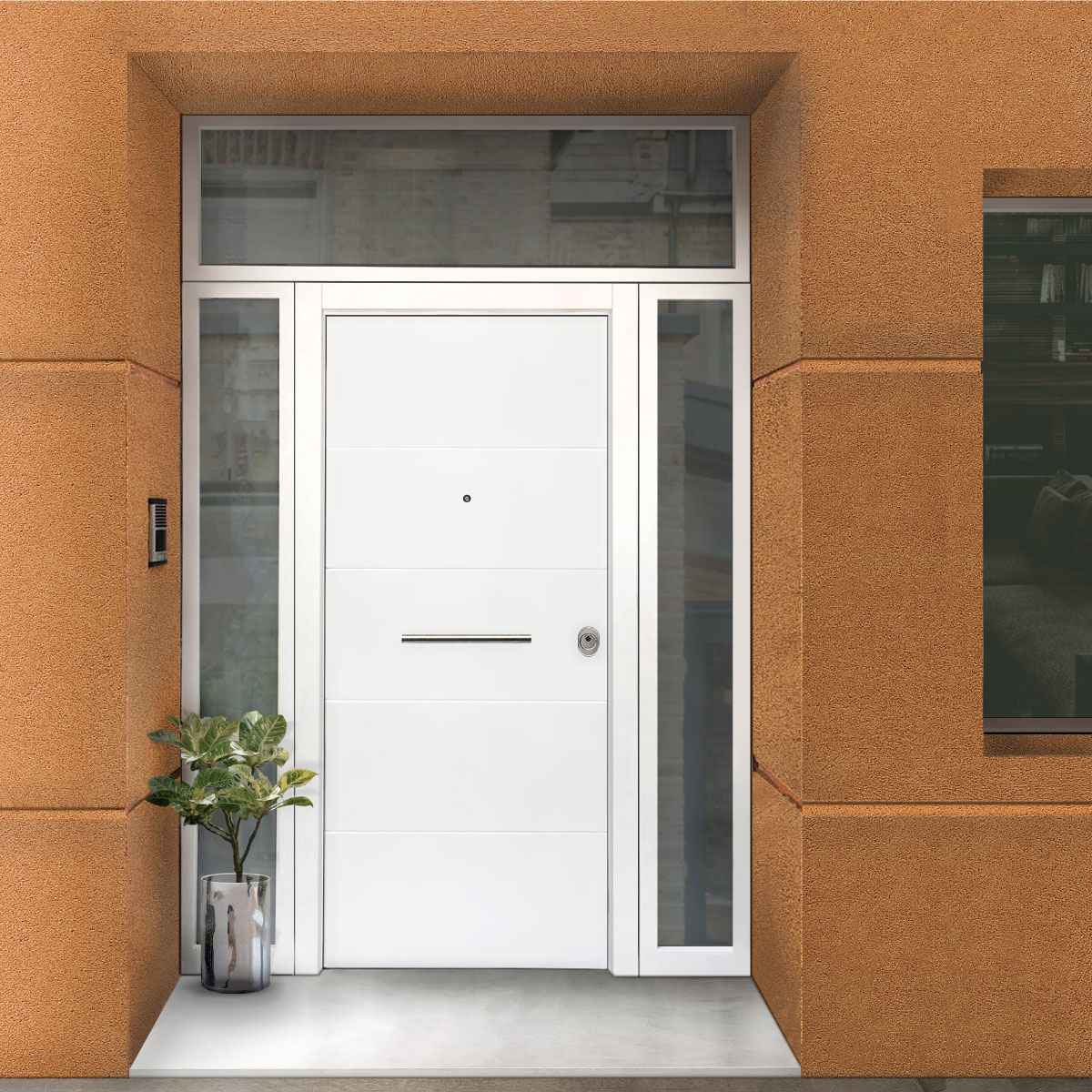
Giving light in safety: a guide to choosing glasses
When choosing a security door, the question often arises whether it’s possible to insert glass elements without losing safety.
The glass arrangement can be made in different configurations inside the security door so that we can distinguish three different formats:
Fenestration
In the case of double-leaf doors, glasses are put in one leaf or both leaves. We ensure excellent flexibility and a wide range of geometric designs to choose from.
Fanlight
The transom window glass is positioned above the door or the double doors: the shape can range from rectangular to half-moon.
Sidelight window
In this case, the glass is positioned on the side of the door, or on a fixed, single or double door.
Choosing a glass: giving light safely
The safety glass is tested using characteristic resistance tests, regulated by the UNI EN 356 standard ”Tests and classification of resistance against manual attack”.
The legislation classifies safety glass according to the resistance opposed to actions due to external forces. Two categories of glasses are defined through two different types of tests:
anti-vandal glass
anti-burglary glass
The test’s goal is to verify if the doors, for a period of time, can prevent unauthorized people and objects from entering inside. Classifying the performance resistance to vandalism, we use a hard body drop test. A 4.11 kg steel ball 100 mm in diameter is the hard body.
This steel ball is dropped from different heights, and all three specimens used in the test must prevent penetration by the impact body.
There are five classes of this test, from P1A to P5A, in ascending order of performance. As for resistance to burglary, the so-called axe test is used, in which all three used specimens must have the required minimum number of shots or hits to be able to be opened.
The axe head weighs about 2 kg and must be made of forged steel. For this type of test, there are three classes, from P6B to P8B, in increasing order of performance.
We use glasses that guarantee anti-burglary, acoustic and thermal performance. The used standard glass is P5A which offers high acoustic and thermal insulation (UG = 1.1 W / m2K, …)